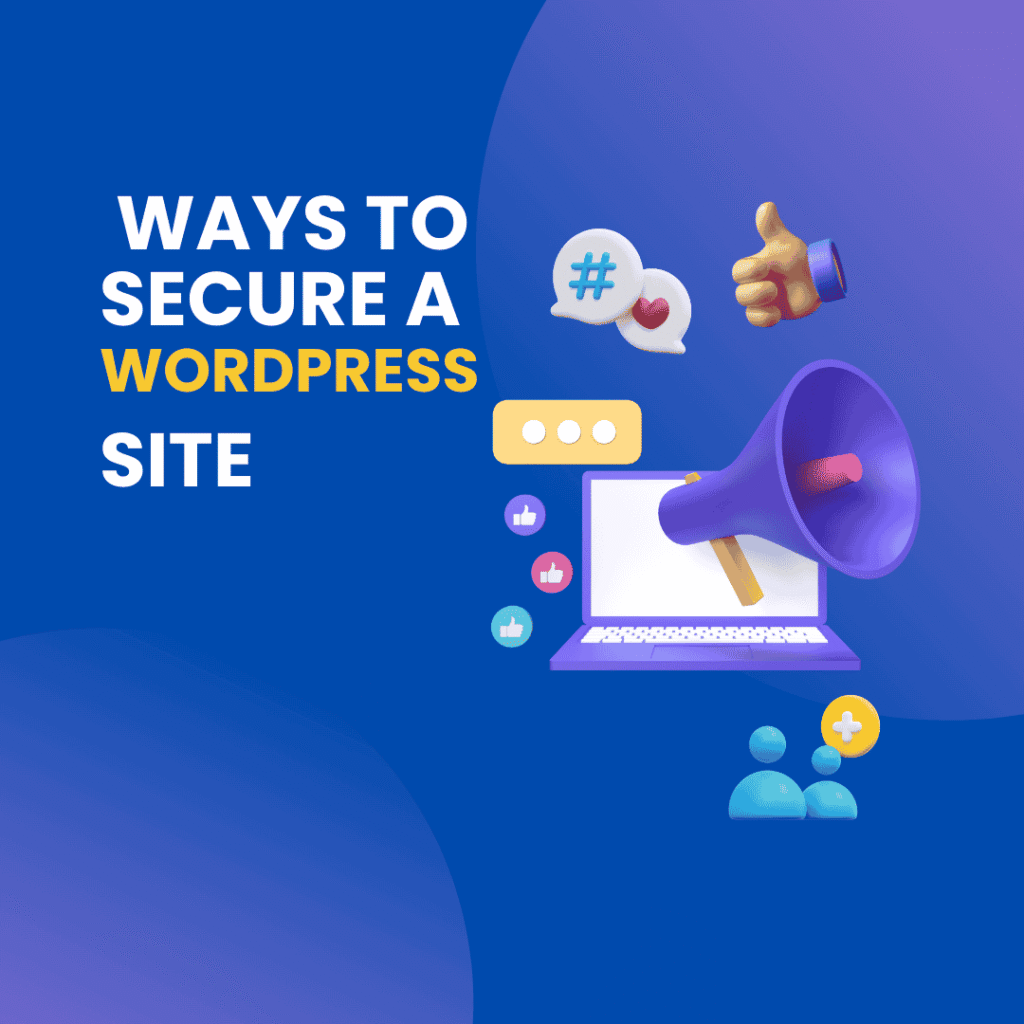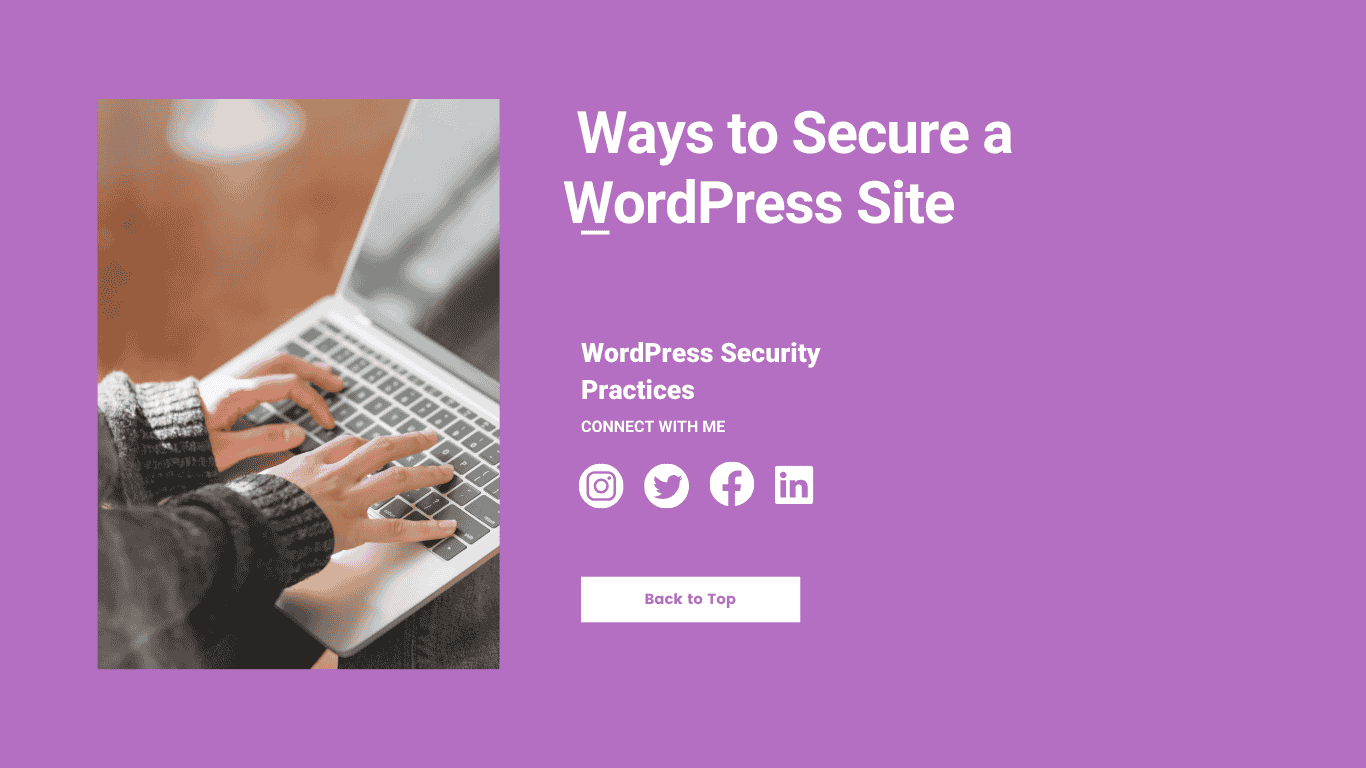Running a WordPress website is exciting, but it also comes with responsibility. Security is one of the biggest concerns for site owners today. While WordPress itself is a strong platform, it still needs some extra care to stay safe from hackers and malware.
Actually, most attacks happen not because WordPress is weak, but because site owners ignore basic safety steps. So, let’s walk through 15 easy and smart ways to make your WordPress site more secure—without sounding robotic or complicated.
Top 15 WordPress Security Practices
| Security Method | Why It’s Important |
| Keep everything updated | Closes known bugs and security holes |
| Use strong, unique passwords | Stops easy logins by bots or hackers |
| Install a security plugin | Monitors and blocks suspicious activity |
| Activate SSL/HTTPS | Encrypts user data during login and visits |
| Update themes and plugins | Fixes bugs and closes security gaps |
| Remove unused tools | Fewer tools mean fewer ways in for hackers |
| Avoid shady plugin sources | Reduces the chance of hidden malware |
| Hide your WordPress version | Makes it harder for hackers to target flaws |
| Disable file editing in dashboard | Stops changes to key code via admin panel |
| Choose a secure hosting provider | Strong hosting adds firewall and backups |
First things first, your WordPress core, plugins, and themes must be up to date. Each new version usually comes with bug fixes and security improvements. So, delaying updates can leave your site exposed. Make updates part of your weekly checklist.
Use Strong Passwords
If your admin password is something like “admin123,” you’re basically inviting trouble. Try to use long, unique passwords with numbers, capital letters, and symbols. You can also use a password manager to make life easier.
Add Two-Factor Authentication
2FA (Two-Factor Authentication) is like adding a second lock on your door. Even if someone figures out your password, they can’t get in without the second code—usually sent to your phone or email.

Use a Security Plugin
Think of security plugins as your site’s bodyguard. They check for malware, block suspicious traffic, and send alerts if something seems off. Popular ones include Wordfence, iThemes Security, and Sucuri. You can start with the free versions.
Limit Login Attempts
Normally, there’s no limit to how many times someone can try logging in. You can stop this with plugins that limit login attempts and lock out users after a few failed tries.
Use SSL and HTTPS
It protects passwords, personal data, and payment info. It also makes your site look more trustworthy to users and Google. Most hosting companies offer free SSL now—use it.
Keep Plugins and Themes Updated
Just like the WordPress core, plugins and themes must be kept updated. Old versions often have holes that hackers can use. Updates don’t only bring new features—they often patch serious security bugs.
Delete What You Don’t Use
Don’t leave it sitting there. Even deactivated tools can pose a threat. The fewer tools you have, the safer your site will be.
Only Use Trusted Tools
Sometimes free plugins or themes come with a hidden cost—malware. Only download from official places like WordPress.org or premium sites you trust. Always read reviews and check the install count before using anything.
Backup Your Site Regularly
Even with all these protections, something could still go wrong. Backups are your safety net. If your site crashes or gets hacked, a clean backup helps you restore everything fast. Use plugins like UpdraftPlus or BlogVault to automate it.
Set Proper File Permissions
Your WordPress files have different roles. Some need to be open, others not so much. If a file is too open, hackers might sneak in. Set the right permissions—or ask your host to help you if unsure.
Hide Your WordPress Version
If your site tells everyone it’s using WordPress 5.2, and hackers know 5.2 has a bug, they’ll target you. Hiding the version number won’t stop them completely, but it adds one more hurdle they have to jump over.
Disable File Editing from Dashboard
WordPress lets admins edit theme and plugin files from the dashboard. Disabling file editing stops this completely. Just add one line of code to your wp-config.php file.
Choose a Good Hosting Provider
Not all hosts are equal. Some offer strong security, while others leave you on your own. Look for a host that includes firewalls, daily backups, malware scans, and good support. Cheap hosting often cuts corners on safety.
Final Thoughts: Stay Safe, Stay Online
Running a WordPress site doesn’t have to feel risky. So, if you simply update your tools, use strong passwords, and keep backups, you’re already ahead of most.
Also, don’t depend on just one method. Instead, combine several steps together. That’s how you build layers of protection. Just like a house needs locks, lights, and alarms—your site needs multiple barriers.
If you apply even half of the 15 tips above, your website will be much harder to break into. In the end, security is not about being perfect—it’s about being prepared.

Hiya! Quick question that’s entirely off topic. Do you know how to make your site mobile friendly? My weblog looks weird when browsing from my apple iphone. I’m trying to find a theme or plugin that might be able to resolve this issue. If you have any suggestions, please share. Appreciate it!
https://samanblogs.com/wordpress-introduces-plugin-to-cut-download-time-fast/
check it out
Wow! Thank you! I always needed to write on my website something like that. Can I implement a fragment of your post to my site?
sure, why not.
What’s Happening i am new to this, I stumbled upon this I’ve discovered It absolutely helpful and it has aided me out loads. I’m hoping to give a contribution & aid other customers like its helped me. Great job.
You really make it seem so easy with your presentation but I find this topic to be actually something that I think I would never understand. It seems too complicated and very broad for me. I’m looking forward for your next post, I’ll try to get the hang of it!
This actually answered my downside, thank you!